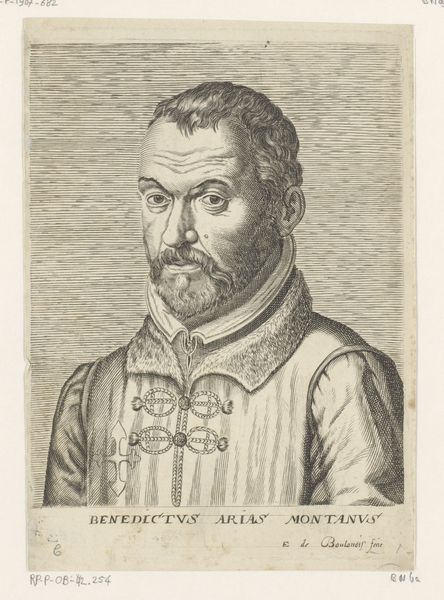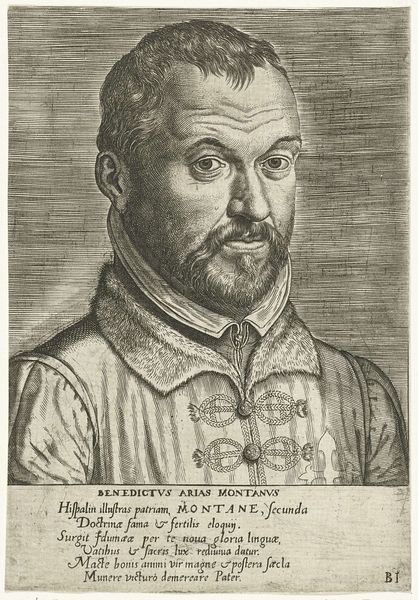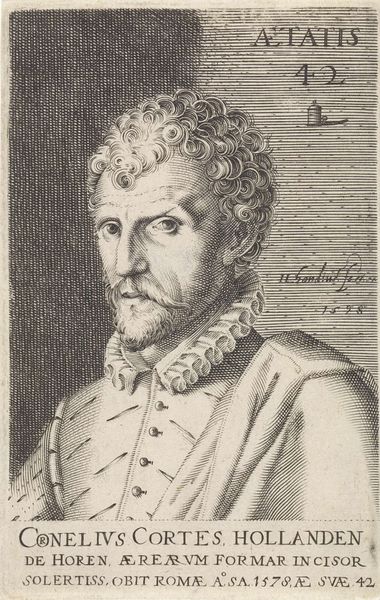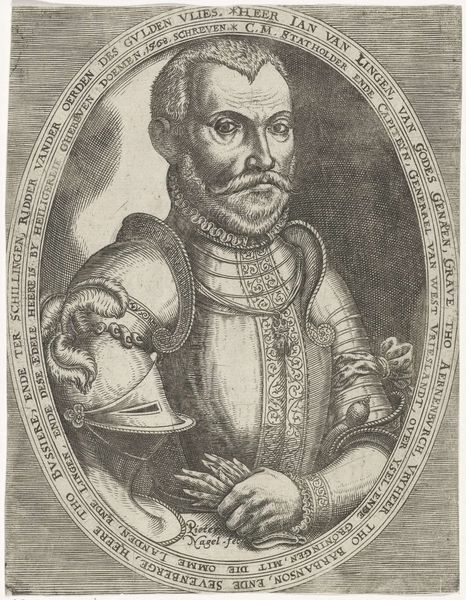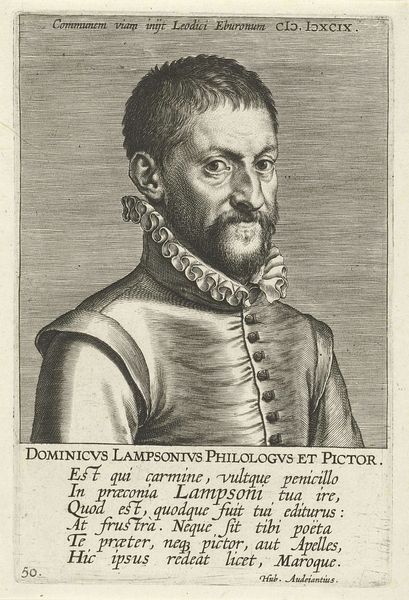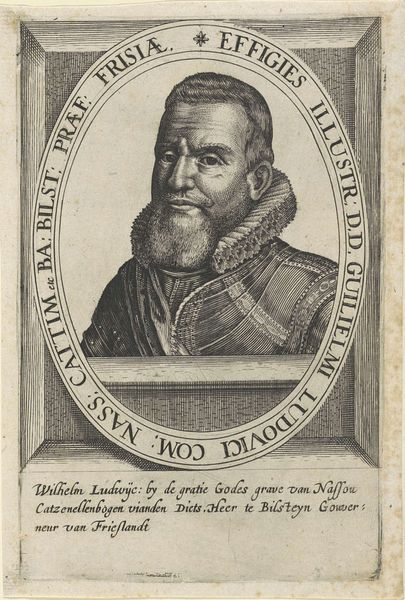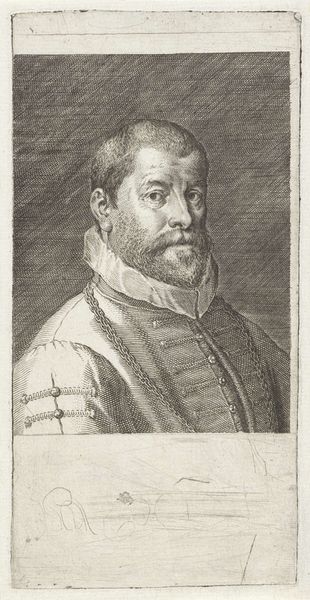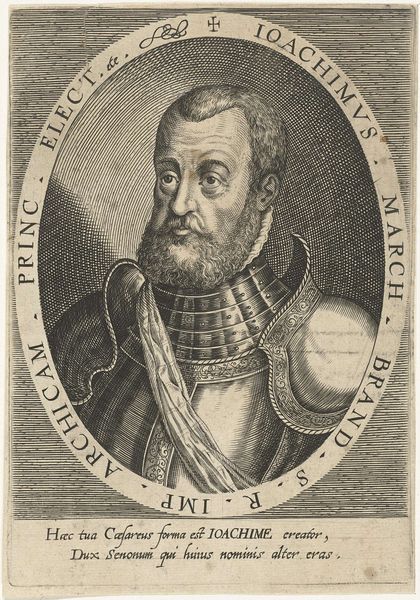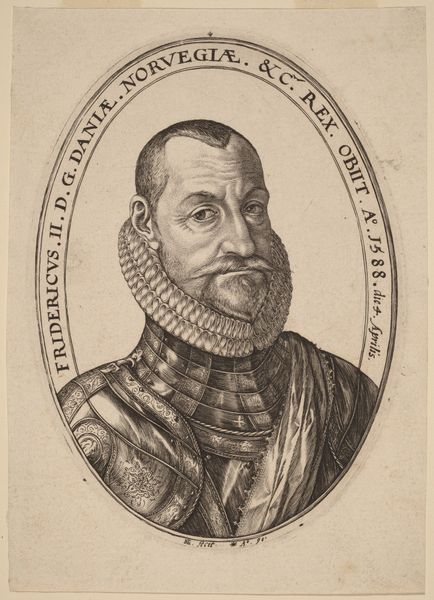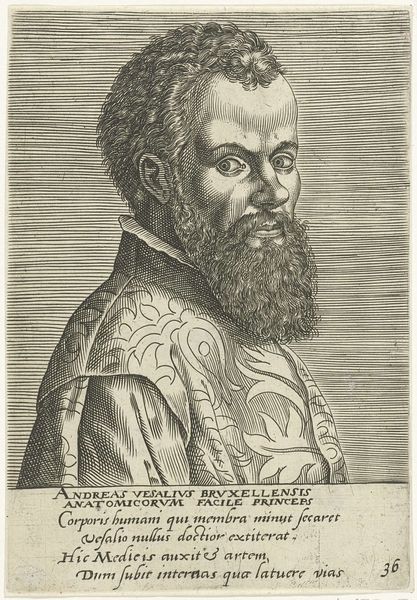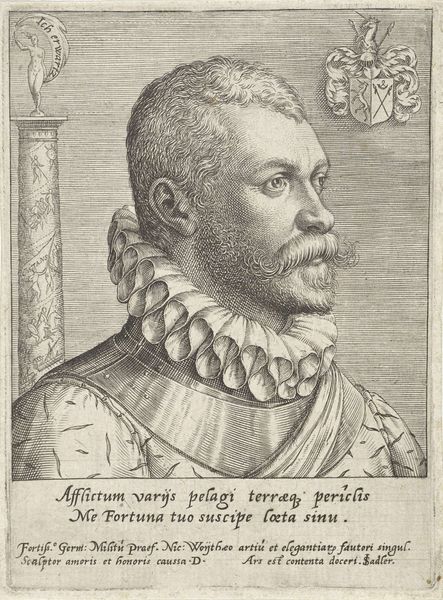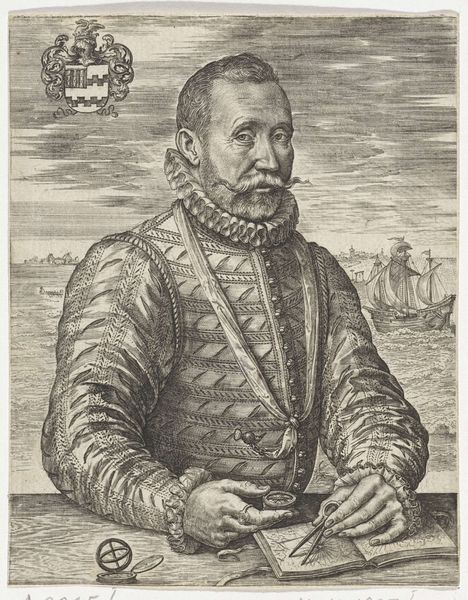
#
pencil drawn
#
facial expression drawing
#
pencil sketch
#
old engraving style
#
portrait reference
#
pencil drawing
#
pen-ink sketch
#
limited contrast and shading
#
portrait drawing
#
pencil work
Dimensions: height 161 mm, width 118 mm
Copyright: Rijks Museum: Open Domain
Curator: This is a portrait of Benito Arias Montano, rendered anonymously, dating approximately from 1572 to 1662. It resides here at the Rijksmuseum. Editor: There’s something immediately striking about his eyes, an intensity and depth, considering it's just a drawing, really. I'm drawn in. Curator: Absolutely. Consider the context of printmaking in the late 16th and early 17th centuries. The production involved skilled labor, from the creation of the image to the physical printing process. The materials, the paper and ink, would have been carefully chosen for durability and quality. Editor: The clothing too speaks of his status – that fur-lined coat and the intricately tied fastenings. This image broadcasts power, position. Is it intended to evoke his standing as a biblical scholar? Curator: Exactly. The rendering would have demanded precision and control. The limited contrast and shading also implies consideration about the distribution of printed copies – accessibility to broader audiences perhaps? Editor: Perhaps the details reinforce what we should consider the core meaning of Montano to be; an intellectual heavyweight of the age, his significance reinforced through repeated symbols. Curator: You know, thinking about the texture achieved with simple lines, you have to wonder how many impressions could have been pulled before the plate wore down, and how that affected the economic value of later copies. Editor: I keep returning to the direct gaze. Is he a sage? Is he a scholar? All communicated via such carefully deployed symbolism. Curator: Seeing this work displayed, really invites a close consideration of art production and its impact on distribution and economy of images. Editor: Agreed. And for me, it really brings forward the significance of the sitter – and by extension, of course, the importance of intellectual tradition as captured through enduring images.
Comments
No comments
Be the first to comment and join the conversation on the ultimate creative platform.
